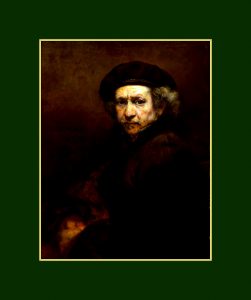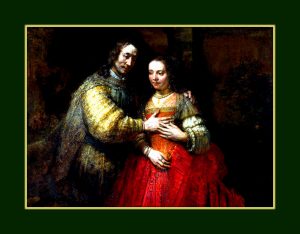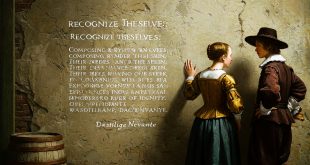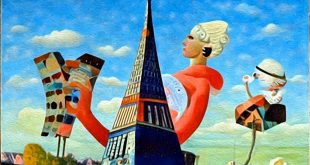In the twenties of the seventeenth century, European painting was impregnated amazing realistic effects of Caravaggio’s art, those that the Italian painter had been able to create through the use of lights. Of that use, also a Dutch painter will full knowledge. That man is Rembrandt, a Dutchman born in a summer day in 1606, becoming one of the most famous European painters. http://www.rembrandthuis.nl/en/ In 1615, the son of a miller (and penultimate of nine children), was sent to the school of Leiden, but he abandoned his studies and became an apprentice in the workshop of a painter. The period of activity by Rembrandt Harmenszoon van Rijn, coincides with what historians call the Dutch Golden Age (which corresponds to the seventeenth century). His great creative triumphs are evident in his self-portraits, in those of his contemporaries, and illustrations of scenes from the Bible.
He has painted the knowledge of classical iconography, with the representation of biblical scenes that were an expression of the knowledge of the texts (as well as observations of Amsterdam’s Jewish population). For twenty years he was the teacher of the most important Dutch painters. Having achieved great success as a portrait painter, his later years were marked by difficulties and tragedies. During the period of Leiden, Lastman’s influence on him was remarkable, his paintings were of modest size (but with a wealth of details). https://www.rijksmuseum.nl/en In the early years in Amsterdam, he began to paint dramatic biblical and mythological scenes. Since 1640, his style had become sober, because he felt the weight of his existential tragedies. Over the years, he shifted his attention to the individual delicate figures, similar to portraits. The painter who had known the secrets of the light, dies in Amsterdam, in an autumn day in 1669, at age 63.
The portrait of a Couple (as Isaac and Rebecca), it is known as “The Jewish Bride”. With its measurements (121.5 cm ×166.5 cm), that oil paint on linen dating around 1665, shows a man places his right hand on a woman’s chest, keeping his left arm over her shoulders. https://www.rijksmuseum.nl/en/collection/SK-C-216?rts=True The woman puts her left hand on the man’s right hand. The couple is portrayed standing up to the knees, and behind them a man spies on them. According to a recent interpretation, the source which inspired Rembrandt is a work of Raphael, where he narrates the episode where Isaac and his wife Rebecca (at the time he pretended to be brother and sister), were discovered by King lovers Abimelech (the man who, in the context, spies on them). Within this framework you perceive exude eroticism of the act of love that the artist tries to paint. Choosing the pigments he mixture dries and scrapes. Choosing the painting technique and the brushes to use, the reflections of light on the fabric, the love of Rembrandt grows, unquenchable, stroke by stroke.
 Meeting Benches World art in all forms
Meeting Benches World art in all forms







